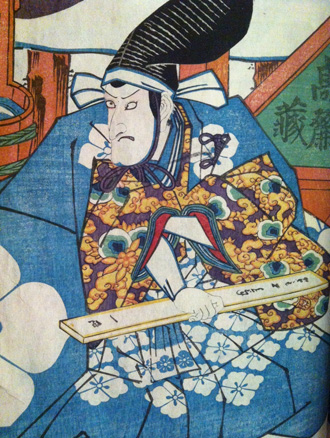July
New museum discovery engine launched

Pre-Raphaelite masterpieces and glass eyes are some of the museum items that can be uncovered using a new online discovery engine developed by Tyne & Wear Archives & Museums working in partnership with Microsoft Research and Newcastle University.
The new way of exploring more than 32,000 museum objects allows people to get lost in a labyrinth of artworks, museum objects and photographs.
John Coburn, Digital Programmes Manager at Tyne & Wear Archives & Museums, explains: “The challenges museums face when sharing their collections online is in audiences knowing where to look. We’ve created a responsive system which presents people with intriguing images from our collections based on their individual interests.
“It allows them to stumble across artefacts they would never have discovered otherwise. So you could find yourself looking at a 19th century Pre-Raphaelite painting from the Laing Art Gallery, or find yourself being stared back at by a glass eye from Discovery Museum’s collection. The experience will be different for every person.”
Thousands of images of artworks and objects from museums and galleries in the North East, including the Great North Museum, Arbeia Roman Fort and Stephenson Railway Museum, are included in the system. Which images are presented is based on the individual’s browsing speed and the way in which they navigate through the collection.
The system is designed to open up the collections for audiences without specialist knowledge of museum collections, allowing people to stumble across some of the weird and wonderful items housed in the North East’s museums and galleries.
John Coburn said: “How do you discover intriguing artefacts in amongst a collection of tens of thousands of objects if you don’t know what you’re looking for? This system is intelligent enough to use a person’s behaviours – how fast they scroll the mouse, which items they click on – to decide what they might enjoy seeing. It then offers up an array of images from the 32,000 available.”
“This project pushes the boundaries of where people can use and experience the treasures to be found in Museums. It does so with some really novel approaches to search and interface design.” said Professor Richard Harper, Principal Researcher, Microsoft Research Cambridge.
Peter Wright, the project lead for Newcastle University's Open Lab said: "The Past Paths project has given us a great opportunity to work with Tyne & Wear Archives & Museums and Microsoft which has challenged us to find new ways for people to make personal connections to data.
Andy Garbett the researcher at Newcastle who developed the system said: “Tyne & Wear Archives & Museums gave us access to a stunning collection of images that inspired us to develop a new approach to browsing the collection which we hope will provide visitors with a truly immersive and enchanting experience of the on-line collection."
The discovery engine works alongside Tyne & Wear Archives & Museums’ more traditional online collections search, offering people an alternative way of discovering and being inspired by artworks and objects.
Metal armour from the 1600s, old family photographs and African beaded jewellery are just some of the items which can be discovered.
The system includes the collections of the Laing Art Gallery, Great North Museum, Discovery Museum, Hatton Gallery, Shipley Art Gallery, Segedunum Roman Fort, Stephenson Railway Museum, Arbeia Roman Fort, and South Shields Museum & Art Gallery.
Developed in partnership with Microsoft Research, Newcastle University’s Open Lab and Collections Trust.
Supported by the Digital R&D Fund for the Arts - Nesta, Arts & Humanities Research Council and public funding by the National Lottery through Arts Council England.
Visit www.collectionsdivetwmuseums.org.uk to enter the labyrinth.
published on: 13 July 2015
